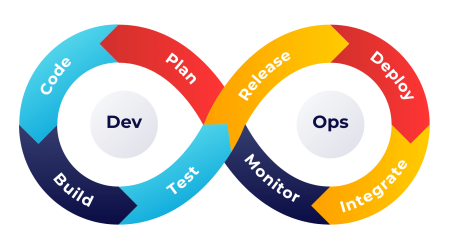How to Successfully Onboard a Remote Dedicated Tech Team
Onboard a remote dedicated tech team might seem challenging, but it doesn’t have to be. As more businesses turn to software development outsourcing and remote collaboration, dedicated tech teams are becoming a popular choice to boost productivity and achieve goals. This blog offers simple tips to help you onboard a remote tech team, improve efficiency, and create a strong virtual work environment.
Whether you are a startup opting for outsourcing product development or a large organization in need of specialized marketing technology solutions, mastering this onboarding process is crucial for long term success. Below, we will walk you through the rules for managing remote tech teams, the benefits of hiring dedicated professionals, and how to tackle common challenges.
Rules of Onboard a Remote Dedicated Tech Team
Onboard a remote dedicated tech team comes with its own set of challenges and requires a tailored approach for success. Unlike in house teams, remote teams depend heavily on clear communication, trust, and the right tools to stay aligned. Onboarding a remote dedicated tech team is a critical first step, as it sets the tone for collaboration and ensures everyone understands their roles and responsibilities. It’s important to establish clear workflows, set expectations early, and provide access to the necessary resources and platforms. Regular check-ins and fostering a culture of open communication can help maintain productivity and engagement. With the right strategies in place, seamless collaboration becomes achievable, both during onboarding and beyond.
1. Define Goals and Expectations
Before you onboard a remote dedicated tech team, clearly outline the project’s objectives, expected deliverables, and key performance indicators (KPIs). Providing this clarity upfront ensures everyone is aligned and understands their role in achieving the desired results.
2. Build Trust Through Transparency
Trust is the foundation of successful remote collaboration. Use project management tools like Jira, Trello, or Monday.com to keep processes transparent. Share milestones, timelines, and updates so your remote team feels engaged and accountable.
3. Foster Regular Communication
Communication tools like Slack, Zoom, and Microsoft Teams are non-negotiable when managing a remote team. Conduct regular check-ins, team meetings, and one-on-ones to address potential issues early, celebrate successes, and maintain strong team dynamics.
4. Using technology.
Implement the right tools to boost collaboration, such as GitHub for code repositories or Figma for design reviews. Advanced marketing technology solutions and software allow you to connect with your team in real time and remain agile.
5. Offer Ongoing Support
Onboarding doesn’t end after the first week. Equip your team with resources to grow, such as access to training materials, knowledge-sharing platforms, and mentorship opportunities. A well-supported team is a productive team.
Top Reasons to Onboard a Remote Dedicated Tech Team

The decision to onboard a remote dedicated tech team comes with numerous benefits. If you’re still deliberating, here are some compelling reasons why outsourcing product development might be right for your business:
1. Cost Efficiency
Hiring an in-house team often includes significant overhead costs such as salaries, benefits, and office space. Outsourcing product development services allows you to access a global talent pool, saving money while ensuring high-quality work.
2. Specialized Expertise
Dedicated software development teams are often experts in their respective fields. By hiring them, you gain access to their specialized knowledge and skills without spending months on recruitment or training.
3. Faster Time to Market
Remote tech teams work in streamlined environments optimized for fast delivery. Whether it’s software development outsourcing or creating marketing technology solutions, having an experienced team ensures quicker completion times for your projects.
4. Scalability
Your business requirements are bound to change, especially if you’re pursuing large-scale digital transformation. A dedicated team can scale up or down depending on your current needs, providing flexibility and stability at the same time.
5. Focus on Core Operations
Outsourcing your tech projects allows your in-house team to focus on strategic planning and core operations, letting the remote development team handle the grind of product development.
Remote Development Team Challenges
Like any significant shift in operational strategy, onboarding a remote development team has its fair share of challenges. Here’s how to tackle them effectively:
1. Communication Barriers
One of the biggest challenges of onboarding a remote dedicated tech team is miscommunication due to differences in time zones, language, or cultural nuances. To resolve this, establish a shared communication protocol and consider overlap hours for real-time interactions.
2. Lack of Cohesion
Building a cohesive virtual work environment can be hard, especially when team members aren’t physically present. Icebreakers, virtual team-building exercises, and non-work chats can help build rapport and morale.
3. Management Hurdles
Managing an outsourced product development team requires careful planning. Use project tracking tools to assign tasks and monitor progress while avoiding micromanagement.
4. Security Concerns
Handling sensitive data remotely poses security risks. Employ VPNs, end-to-end encrypted solutions, and clearly defined data protection policies to safeguard your business.
Foster a Cohesive Virtual Work Environment
A cohesive virtual work environment is key to ensuring that your remote development team feels just as engaged as in-house employees. Here’s how to create an efficient and connected virtual workspace:
Invest in Collaboration Tools
- Tools like Zoom, Google Workspace, and Notion help bridge the gap between remote team members, fostering a more collaborative atmosphere.
Celebrate Wins
- Small wins fuel team morale. Whether it’s meeting project deadlines or innovating a new feature, ensure your remote tech team gets the recognition it deserves.
Offer Flexibility
- Flexibility cultivates productivity in a remote setting. Allow your team to set their hours within reason, as long as deliverables are met on time.
Encourage Feedback
- Feedback goes both ways. Create an open environment where remote teams feel empowered to share ideas and constructive insights.
Align with Your Brand Values
- Make your team’s work meaningful by aligning it with the company’s overall goals and core values. This alignment creates a sense of purpose, even in a virtual work setting.
Drive Success with the Right Approach
Successfully onboarding a remote dedicated tech team has never been more important in today’s increasingly digital world. From saving costs to gaining specialized expertise, dedicated teams can completely transform how businesses approach projects and operations. While challenges like communication barriers and security risks exist, the right tools and strategies can help you overcome them.
Remember, it’s not just about onboarding the team; it’s about integrating them seamlessly into your business processes and building a cohesive virtual work environment that fosters productivity and satisfaction.
If you’re considering taking this route, seek out one of the top digital transformation companies or explore software development outsourcing services that align with your company’s vision. Whatever your goal, the benefits of a well-onboarded remote development team are unmatched.












Leave a Reply